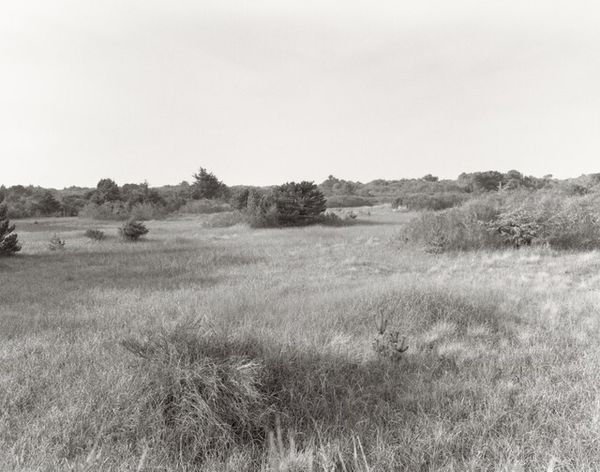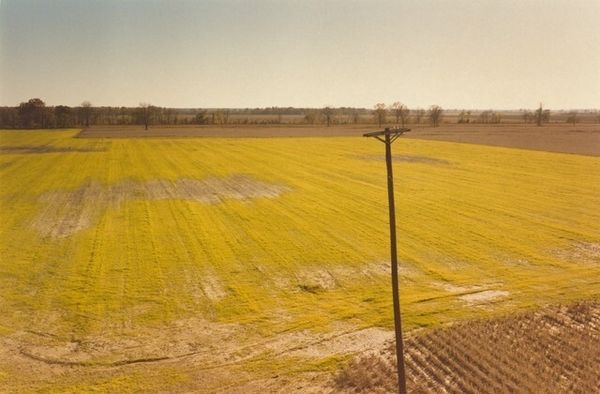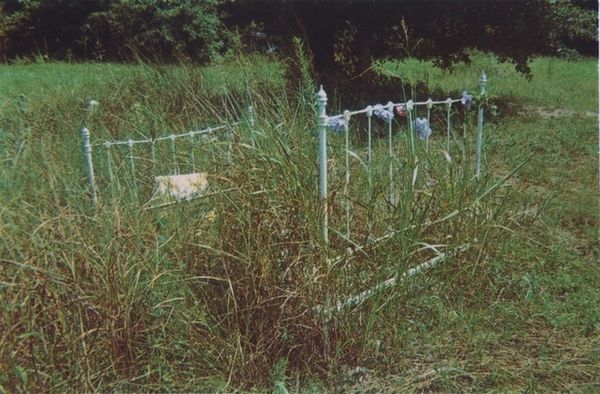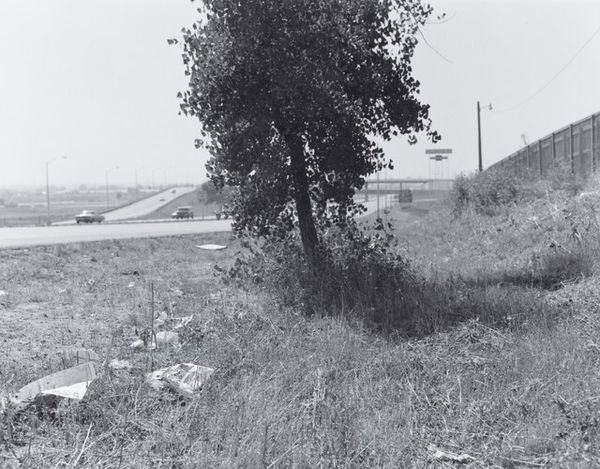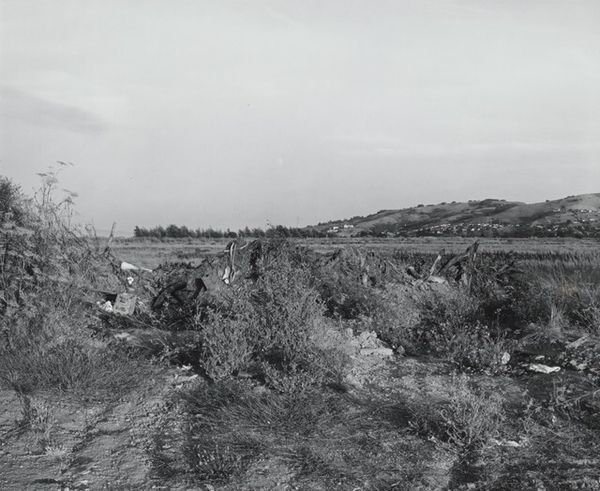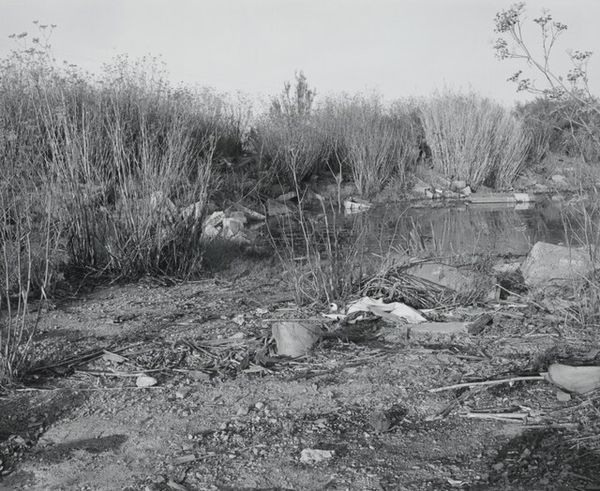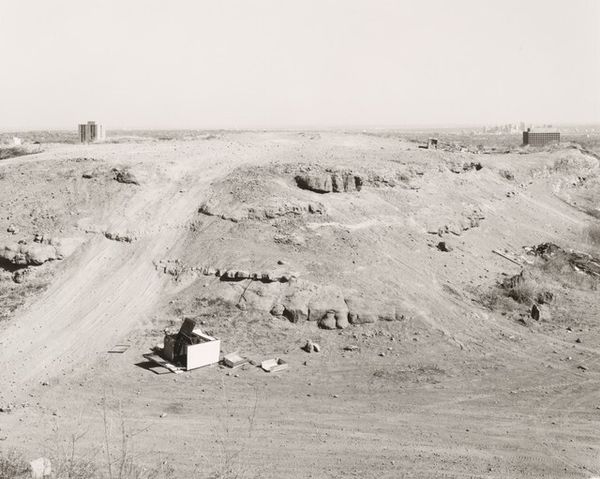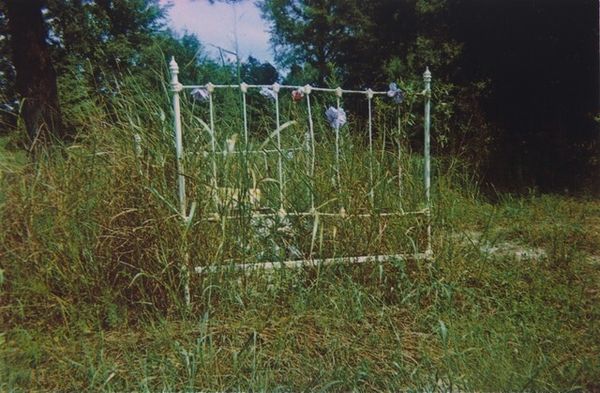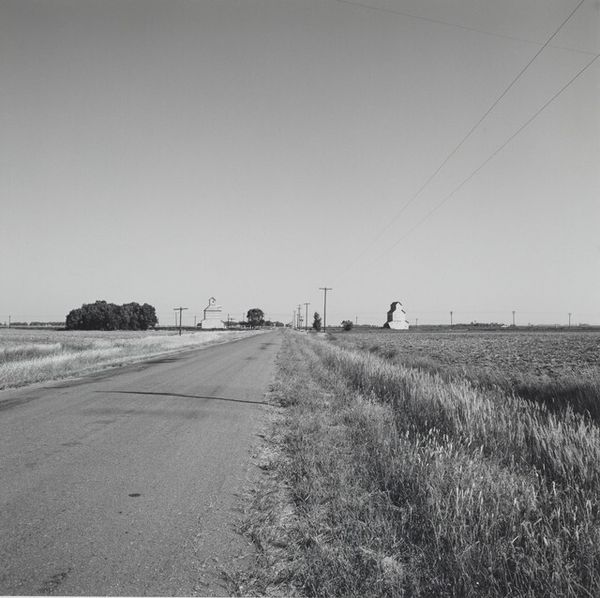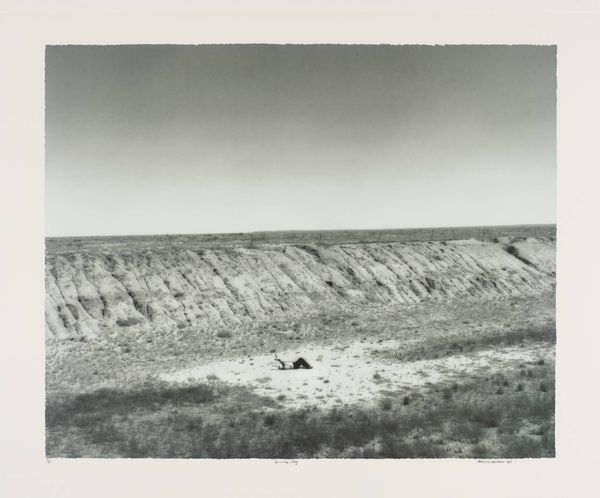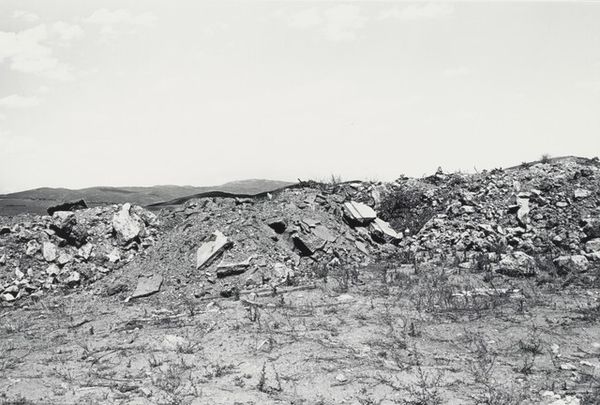
c-print, photography
#
contemporary
#
nature photography
#
landscape
#
c-print
#
nature
#
photography
#
realism
Dimensions: image: 29 × 44.25 cm (11 7/16 × 17 7/16 in.) sheet: 40.64 × 50.8 cm (16 × 20 in.)
Copyright: National Gallery of Art: CC0 1.0
Curator: This photograph, simply titled "Untitled," was taken by William Eggleston around 1971 and printed as a C-print. It immediately strikes me with its realism. What is your initial impression? Editor: There's a stark emptiness here. It feels neglected, almost forgotten. The palette is subdued, almost sepia-toned, yet with these bursts of decaying red and brown from the weeds that creates a sense of decay, of something ending. Curator: That feeling resonates with a lot of readings of Eggleston's work. He often photographed the mundane aspects of American life, particularly in the South, avoiding romanticization. The very ordinariness he captured serves as a commentary on the social landscape of the time. Editor: And that's what hits me. This isn't some sweeping vista. It's a patch of wasted land, suggesting suburban sprawl or the effects of industrialization on the natural landscape. It’s visually unappealing, and makes me wonder about the community nearby. How do the politics play in this location's "in-between" state? Curator: Exactly. And his use of color is key here. Eggleston was pioneering in elevating color photography to an art form, and the somewhat drab palette he employs amplifies the subject matter, highlighting its gritty reality instead of making it picturesque. Editor: There's an interesting tension in the composition. The field stretches to the horizon, but the eye is immediately drawn to the immediate foreground and its thick plantlife. I wonder if we’re meant to consider how quickly land can return to nature, despite development. This seems deliberate on Eggleston’s part. Curator: He saw beauty in the unadorned. You know, looking back at his overall oeuvre from the 70s onward, we can really see his perspective shift to incorporate vernacular architecture and roadside Americana in his landscape work, and understand this aesthetic choice he’s using. He wasn't interested in staged beauty, he saw authenticity in everyday places and moments, transforming ordinary scenes into significant social commentary. Editor: It’s thought-provoking, because as the artist and audience both are aware that landscapes are a common style throughout art history, how is he subverting that in favor of a realism with more grit and social intention. It serves as a kind of elegy, I think, to places overlooked and almost destroyed. Curator: I completely agree. It's a perspective shift, urging us to reconsider what is beautiful and what holds cultural importance. Editor: Definitely food for thought as we reconsider art through different intersections, it all has a strong voice.
Comments
No comments
Be the first to comment and join the conversation on the ultimate creative platform.
